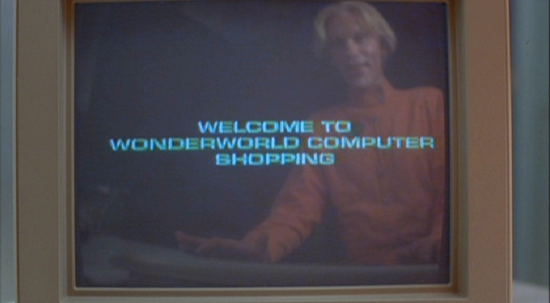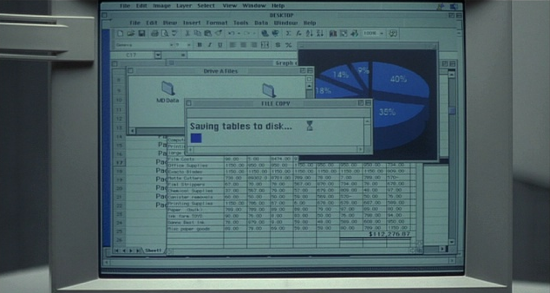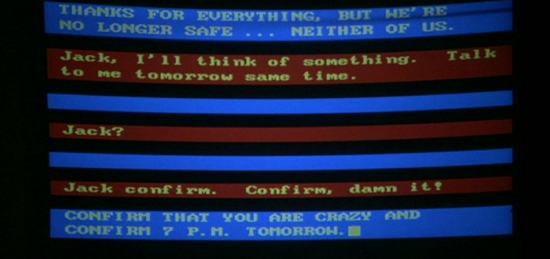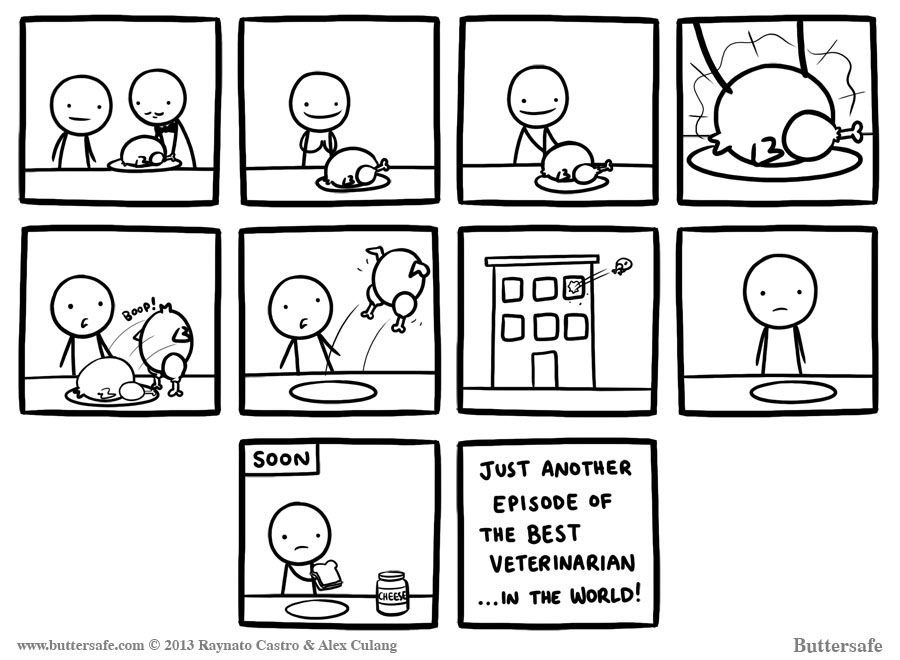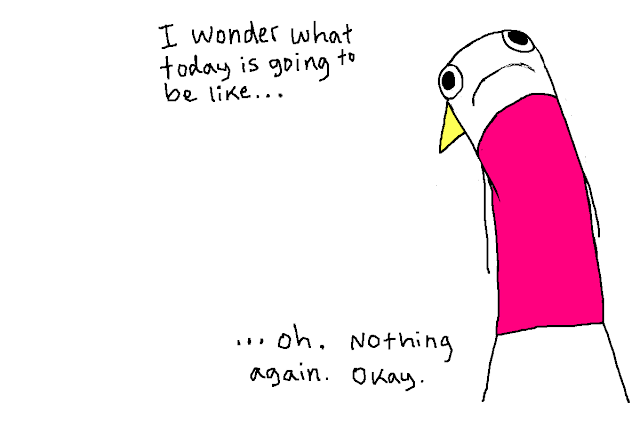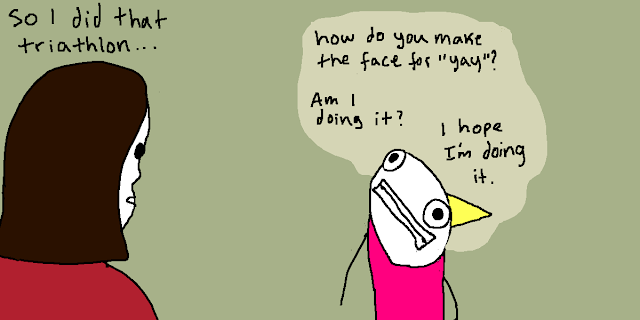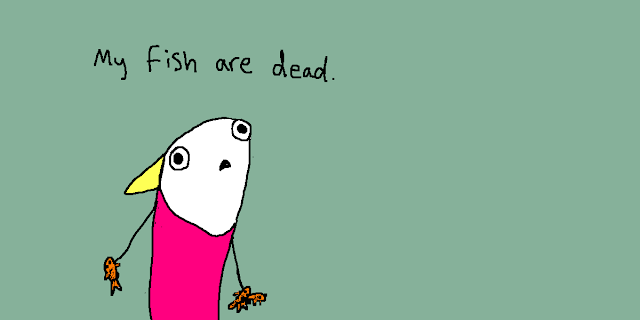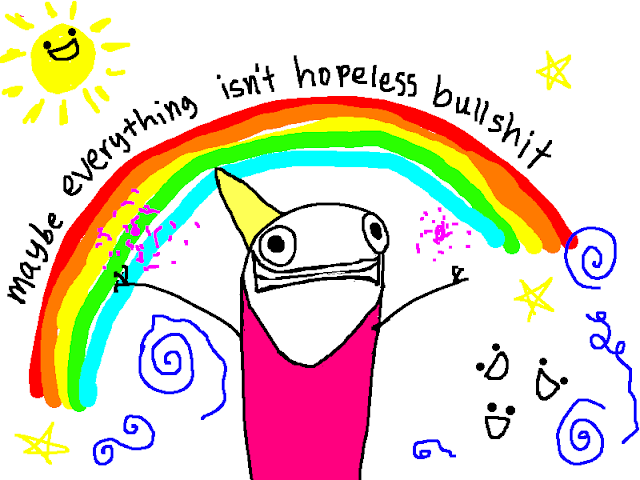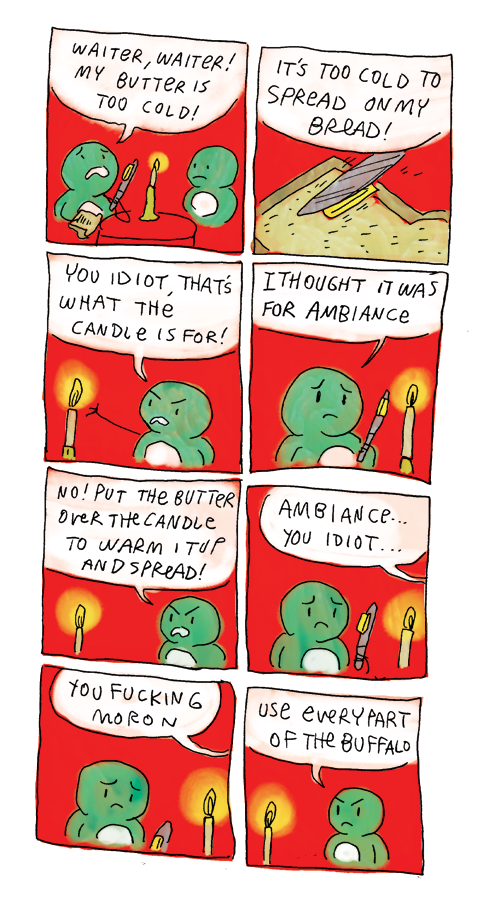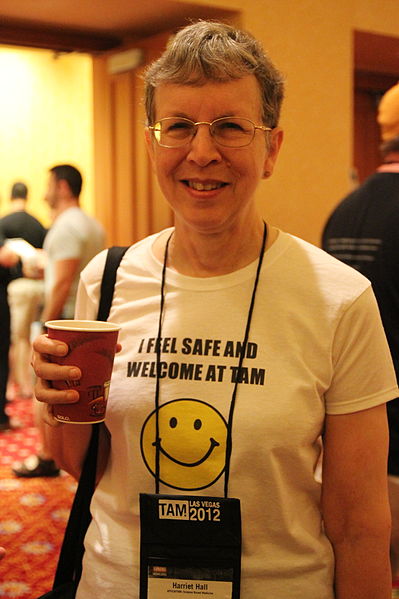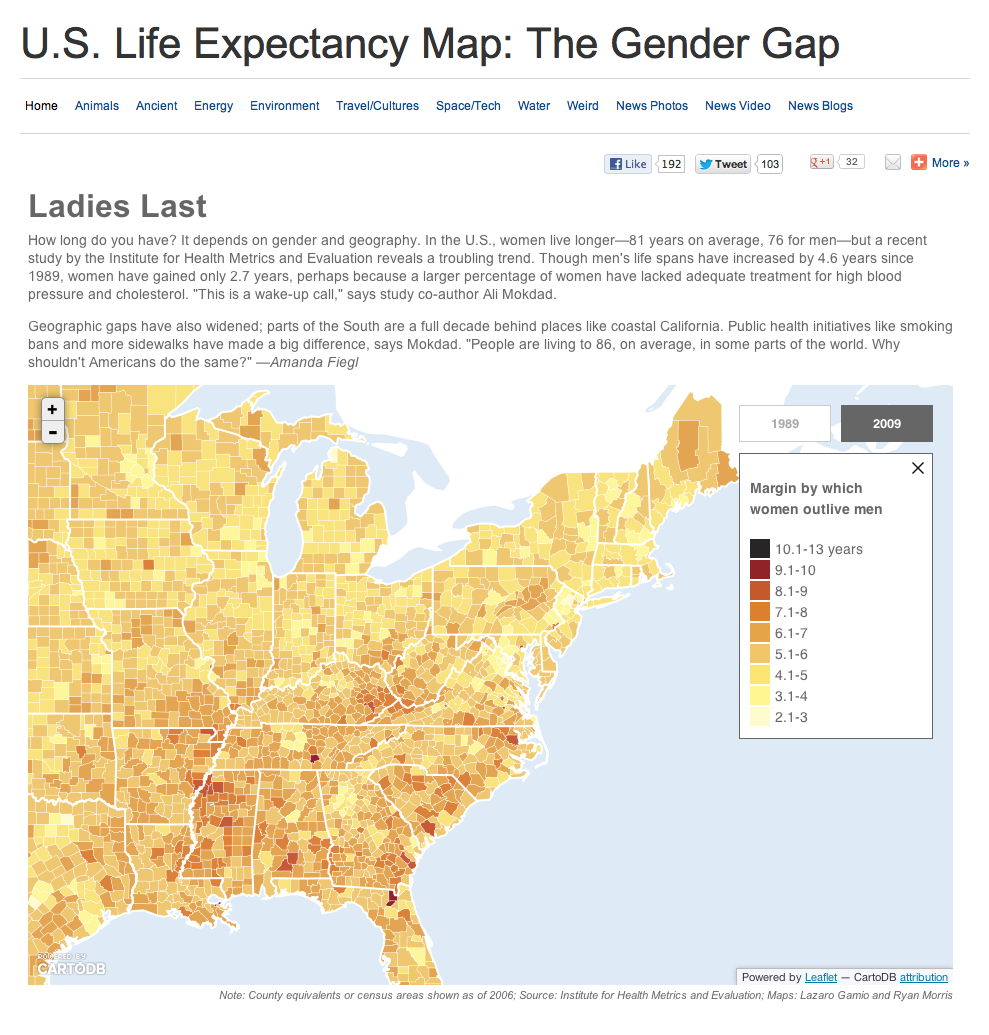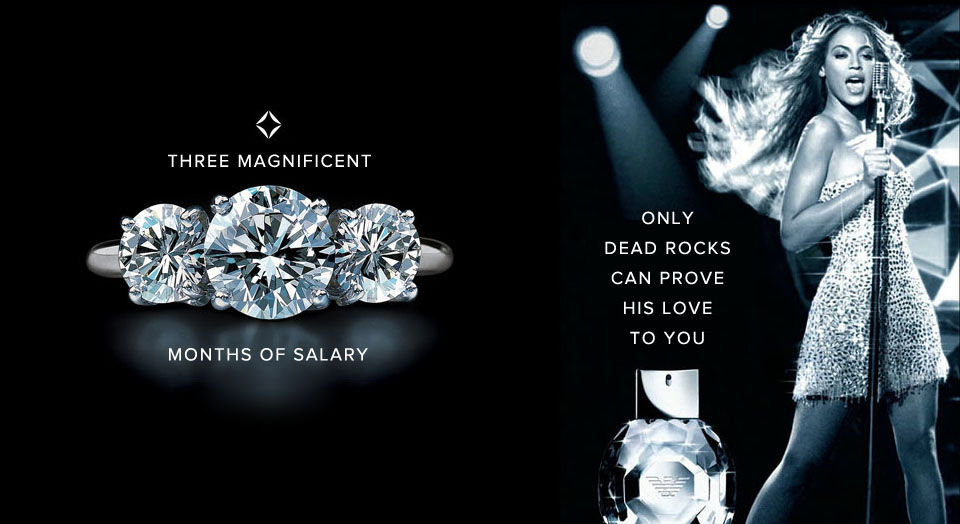Despite technological advancements since the Industrial Revolution, cooking remains a spectacularly inefficient process. This holds true for poor and rich countries alike. While modern gas and electric cooking stoves might be more practical and produce less indoor pollution than the open fires and crude stoves used in developing countries, they are equally energy inefficient.
In fact, an electric cooking stove is only half as efficient as a well-tended open fire, while a gas hob is only half as effective as a biomass rocket stove. And even though indoor air pollution is less of an issue with modern cooking stoves, research indicates that pollution levels in western kitchens can be surprisingly high.
Image: a typical three-stone fire. Source: Global Alliance for Clean Cookstoves.
----------------------------------------------------------------------------------------------------------------------------------------------
----------------------------------------------------------------------------------------------------------------------------------------------
Present-day cooking methods in poorer countries are quite well documented, as they are one of the main concerns of NGOs which promote appropriate technological development. An estimated 2.5 to 3 billion people still cook their food over open fires or in rudimentary cookstoves, and these numbers keep increasing due to population growth.
The most basic and widely used type of cooking device is the wood-fuelled "three-stone fire", which is made by arranging three stones to make a stand for a cooking pot. Alongside the three-stone fire -- which dates back to Neolithic times -- many types of home-made cooking stoves can be found. They are powered by burning coal or biomass, be it wood, crop residues, dung or charcoal. [1]
Indoor cooking in poor countries. Image: Source: Global Alliance for Clean Cookstoves.
The main concern with the use of crude biomass cooking stoves is their destructive influence on human welfare and natural resources. When used indoors, biomass cooking stoves lead to severe health issues such as chronic lung diseases, acute respiratory infections, cataracts, blindness, and adverse effects on pregnancy. The main victims are women, who do most of the housework, and young children, who are often carried on the mother's back while she is cooking.
Inefficient biomass stoves also force people (again, most often women) to spend much of their time collecting fuel. The environmental degradation caused by biomass stoves is equally problematic. When wood is used as a primary fuel, inefficient cooking methods lead to large-scale deforestation, soil erosion, desertification and emissions of greenhouse gases. For coal-fuelled stoves, the main issue is indoor air pollution.
The Thermal Efficiency of a Three-stone Fire
At the heart of the problem lies the low thermal efficiency of traditional cooking methods. For three-stone fires, thermal efficiency is stated to be as low as 10 to 15%. [1][2] In other words: 85 to 90% of the energy content in the wood is lost as heat to the environment outside the cooking pot. Obviously, this low efficiency wastes natural resources, but it also boosts air pollution and greenhouse gas emissions because the relatively low temperature of the fire leads to incomplete combustion.
----------------------------------------------------------------------------------------------------------------------------------------------
Well-constructed three-stone fires protected from wind and tended with care score between 20 and 30% thermal efficiency
----------------------------------------------------------------------------------------------------------------------------------------------
An improved three-stone fire. Picture: Chef Cooke @ Flickr.
However, the issue is more complicated than it is usually presented. To begin with, the productivity and cleanliness of an open fire (and similar crude cooking stoves) greatly depends on the circumstances in which they are used and on the skills of the cook. In its test of 18 cooking stove designs from all over the world, the Partnership for Clean Indoor Air (PCIA) [3][4] concluded that:
"Well-constructed three-stone fires protected from wind and tended with care scored between 20 and 30% thermal efficiency. Open fires made with moister wood and operated with less attention to the wind can score as low as 5%. The operator and the conditions of use largely determine the effectiveness of operation. If the sticks of wood are burnt at the tips and pushed into the center as the wood is consumed, the fire can be hot and relatively clean burning."
Due to the influence of environmental factors such as wind, an indoor three-stone fire is generally more efficient than one operated outside. However, outdoor open fires can also be made more efficient by placing them in a hole in the ground or by shielding them with the use of earthen walls, which also adds thermal mass. Furthermore, PCIA remarks that "it is important to recognize that the open hearth and resulting smoke often have considerable cultural and practical value in the home, including control of insects".
The Thermal Efficiency of Improved Biomass Stoves
Especially since the 1970s and 1980s, many international NGO's have tried to improve cooking traditions in poorer countries. This has resulted in a large number of so-called "improved cooking stoves", which again vary in terms of design, performance and costs. Hundreds of variations exist. [1][4]
A collection of improved biomass stoves. Source: Global Alliance for Clean Cookstoves.
Some of these designs are exclusively aimed at minimising air pollution at the cost of higher fuel consumption, while other designs achieve a higher efficiency but increase air pollution. [4] In this article, we will focus exclusively on cooking stoves that address both issues simultaneously. This is not to suggest that other designs can't be preferable in certain circumstances. For example, because biomass cooking stoves do not present direct health problems when used outdoors, saving fuel would be the most important aim in that context.
Compared to a basic three-stone fire with 10-15% thermal efficiency, improved cooking stoves can easily halve the fuel requirements of the cooking process. This can be achieved by providing an insulated combustion chamber, improving the air supply, and other measures.
In a laboratory comparison of five major types of biomass cooking stoves, it was found that an improved rocket stove uses 2,470 kJ to boil one litre of water and then simmer it for 30 minutes, while a basic three-stone fire requires 6,553 kJ to fulfill the same task (see the dark blue bars in the graphic above). [5][1] The rocket stove thus uses 60% less fuel than the three-stone fire. Furthermore, the rocket stove boils 2.5 litres of water more than 5 minutes faster (see the light blue points in the graphic above).
----------------------------------------------------------------------------------------------------------------------------------------------
A rocket stove can double the thermal efficiency of a well-tended open fire
----------------------------------------------------------------------------------------------------------------------------------------------
The values are the average of three tests and measure specific energy consumption instead of thermal efficiency. Both test methods have their shortcomings -- measuring the efficiency of cooking is suprisingly complex -- so by applying both methods the accuracy of an experiment increases. [6] This was done by the Partnership for Clean Indoor Air, which compared the thermal efficiency and specific energy consumption of 18 cookstove designs, including a well tended open fire with a thermal efficiency of 20-30%. [4]
In this study, one of the best performing improved biomass stoves -- a 20 liter can rocket stove (image at the right) -- convincingly beats the efficiency of the well-tended open fire. It requires 733 grams of wood (12,579 kJ) to bring five litres of water to boil and simmer for 45 minutes, only 65% of the 1,112 grams of wood (19,496 kJ) required by the well-tended open fire. The thermal efficiency of the rocket stove varies between 23 and 54%. [7]
The rocket stove also lowers air pollution: the emissions are only 26% of the carbon monoxide (CO) and 60% of the particulate matter (PM) produced by the well-tended open fire. Lastly, it shortens cooking time to 22 minutes for five litres of water, compared to 27 minutes for the open fire.
The top performing biomass stove in the test is a wood gas stove, with slightly more than one-third the wood consumption (459 grams of wood or 9,434 kJ) and 15-20% of the pollution levels of the three-stone fire. It has a thermal efficiency of 44-46%. However, it requires an electric fan to improve combustion efficiency, while all others are natural-draft stoves.
Cooking in Wealthy Households
There is great irony in the fact that the improved biomass stoves mentioned above are much more efficient than modern cooking stoves used in the western world and in wealthier households of developing nations. In fact, most modern cooking stoves have a thermal efficiency that is on par with that of a three-stone fire.
The western world switched from open fires to closed cookstoves from the eighteenth century. Initially, these "kitchen stoves" were used for both heating and cooking, and were powered by coal, charcoal or biomass. When central heating systems were introduced in the early twentieth century, the kitchen stove was replaced by a stand-alone cooking appliance, powered by gas or electricity.
----------------------------------------------------------------------------------------------------------------------------------------------
Improved biomass stoves have double or triple the thermal efficiency of modern electric or gas cooking stoves
----------------------------------------------------------------------------------------------------------------------------------------------
Conventional electric hobs use attached iron plates as their heating units, while more sophisticated models use infrared, halogen or induction units, which are positioned below glass ceramics. Of these, only induction-based cooking plates are more efficient than conventional electric hobs. The others mainly offer increased convenience, such as greater ease when cleaning. Most gas cooking stoves place burners on top of a stainless steel or ceramic surface, while others place them on top or beneath a glass ceramic surface. Again, the latter offers increased convenience, but no significant efficiency benefit. [8]
An electric glass-ceramic cooktop (Source: Wikimedia). Less efficient than a well tended open fire.
Research into the efficiency of modern cooking stoves is rather limited. According to a study by the Dutch research institute VHK, a traditional electric cooktop (with vitro-ceramic plate) has a thermal efficiency of 13%, while that of an electric induction cooker is 15%. A microwave obtains 19% thermal efficiency. Only a classical gas cooking stove (23%) reaches the thermal efficiency of a well-tended three-stone fire. [8] While the study is aimed primarily at the preparation of hot drinks, it is the most complete study available and its results are applicable to cooking food with only a few small caveats. [9]
Now, if we compare the thermal efficiencies from modern cooking stoves with those from stoves used in poorer households, we see that the improved biomass stoves in developing countries beat our "high-tech" cooking technology with a factor of two to three (graphic below). Gas or electric ovens are not included in this comparison, but their efficiency is even lower than gas or electric hobs because water is a much better conductor of heat than air.
The low efficiency of modern cooking devices may surprise people, as these are not the figures that are usually presented in sales brochures or consumer reports. For example, the Californian Consumer Energy Center gives an efficiency level of 90% for an electric induction cooker, 65% for a standard electric range, and 55% for a gas burner. [10]
Power Conversion Losses
The main discrepancy with these figures is caused when one doesn't take into account that electricity first needs to be produced in power plants which sometimes convert less than a third of the primary energy into electricity [11]. This is not an issue with gas or biomass stoves, where a primary fuel is directly converted into heat for cooking. [12] But it does have a destructive effect on the thermal efficiency of any electric cooking device, be it an electric hob or a microwave. In the graphic below, power conversion losses are indicated by the dark blue bars.
The VHK study assumes an electric grid efficiency of 40%. This figure takes into account power generation and distribution losses, as well as fuel extraction and a projected saving on these issues over an average product life of 10-15 years. [8] It should be noted that this percentage corresponds to a global average, including the use of renewables and atomic energy. Depending on the country, grid efficiency can be higher or lower. [13]
Boiling water preparation energy impact (kWh primary energy for 1,000 litre useful boiled water per year) for different cooking devices. Dark blue: power generation loss. Light blue: heat loss. Red: theoretical minimum. Pink: production, distribution, end-of-life. Pink: extra boiling time. Purple: standby. Green: over-filling. Source: [8].
If we only look at the different types of thermal power plants, we find that the thermal efficiency for a traditional coal plant (81% of all coal-based power plants in use) is only 25 to 37%, while that of a common direct-combustion biomass power plant is only 20%. [13][14] At world level, the average energy efficiency of thermal power plants is 36%. [13] These percentages should be reduced with electric transmission and distribution losses, which are on average 6% in Europe, 7% in the USA, and 9% on a world level. [13]
This means that if your electric stove is operated by electricity from a biomass power plant -- a fast growing "green" trend nowadays -- the power conversion efficiency is three to four times lower (11-14%) than the authors of the study assume, and thermal efficiency drops to about 5%. This is similar to the thermal efficiency of a neglected open fire, and one-tenth the thermal efficiency of a rocket stove. Likewise, a cookstove which uses coal or gas directly to heat food is much more energy efficient than a cookstove that runs on electricity produced by a coal or gas power plant.
----------------------------------------------------------------------------------------------------------------------------------------------
Essentially, any electric cooking device is an insult to the science of thermodynamics
----------------------------------------------------------------------------------------------------------------------------------------------
Evidently, there is something wrong with the western approach to sustainability. Converting heat into electricity which is then converted back into heat, at 20-40% efficiency, is similar to building a Rube Goldberg machine; it's a needlessly complex operation compared to simply converting the primary fuel into heat to boil water. Essentially, any electric cooking device is an insult to the science of thermodynamics.
Heat Transfer Loss
A second problem is that the high efficiency figures given in sales brochures and consumer reports underestimate the heat loss that occurs during the heat transfer from cooking stove to cooking pot (shown by the light blue bars in the graphic above). This heat loss is present with all cooking stoves, but is especially high in the case of gas hobs. In the graphic above, the red bar concerns the minimum energy that it takes to boil 1,000 litres of water, assuming that there is no energy loss during the heat transfer between the cooking stove and the water. This value is 105 kWh/yr for a starting cold water temperature of 10 degrees celsius.
Energy losses appear because of three reasons. Firstly, some heat from the cooking fire escapes before it can reach the cooking vessel. Secondly, some heat from the cooking fire is used to heat up the cooking pot, which constantly loses heat to the environment. Lastly, heat is wasted because some of the boiling water escapes through evaporation. While the red bar is logically the same for every cooking device, the light blue bar showing the additional energy required to compensate for heat transfer loss varies from 57 kWh/yr for an electric induction stove to 255 kWh/yr for a gas hob.
Gas stoves have the largest heat transfer losses of all modern cooking stoves. Picture: Ashley Bischoff @ Flickr.
Heat transfer loss is not fully accounted for in most testing standards for cooking appliances. For example, the US standard uses a test by which the heat transfer efficiency of a cooking top is established from heating up aluminum cylinders of certain dimensions, not pots of water. [15][16] This avoids the complex phase change from liquid to vapour and is thus better reproducible.
----------------------------------------------------------------------------------------------------------------------------------------------
Heat transfer loss is not fully accounted for in most testing standards for cooking appliances
----------------------------------------------------------------------------------------------------------------------------------------------
However, as all the heat of the cylinder is counted as useful, it ignores that in real life situations some energy -- notably the energy to heat up the pot or kettle itself -- is wasted. Only taking into account the energy loss in heating the pot itself, energy efficiency decreases with about 10% of the figures given by standard tests, concludes VHK. [8] Furthermore, the US test is modeled after the process of boiling food on all burners or hot plates simultaneously, which is not always the case. Heat transfer losses are larger when only one or two pots are on the fire.
An outdoor three-stone fire. Image: Global Alliance for Clean Cookstoves.
Apart from power conversion losses and heat transfer losses, the remainder of the energy losses are due to production, distribution and disposal of cooking devices (embodied energy), standby losses (which are only relevant for microwaves, induction stoves and sophisticated gas stoves), and cooking habits. These factors have a relatively small influence.
Of all the energy losses involved in modern cooking appliances, only heat transfer loss applies to cooking devices in poorer households. There are no power conversion losses, fuel is mostly gathered by hand, there are no standby losses, and embodied energy is negligible as most devices are home-made.
Indoor Air Pollution in Rich vs. Poor Households
While the thermal efficiency of modern cooking devices is clearly inferior to that of a well-tended three-stone fire or rocket stove, they do have an advantage when it comes to indoor air pollution. However, this is not a black-and-white issue either. Air pollution levels depend on what you're cooking, how skillful you are, and which technology you use.
In the worst case scenario, pollution levels in modern kitchens can be similar to those of a well-tended three-stone fire indoors. This is not to say that the problem of indoor pollution in poor households is overstated, but rather that cooking in modern kitchens is not always as clean as we assume it to be.
----------------------------------------------------------------------------------------------------------------------------------------------
Pollution levels in modern kitchens can be similar to those of a well tended three-stone fire inside the house
----------------------------------------------------------------------------------------------------------------------------------------------
Particulate matter (PM) is considered as the single best indicator of potential harm in air quality. [4] In poor households where indoor cooking happens with crude stoves or open fires, PM-levels vary from 200 to 5,000 ug/m3 over a 24-hour period, and from 300 to 20,000 ug/m3 during the actual use of stoves. [17][18][19] The Partnership for Clean Indoor Air measured PM emissions for a well tended three-stone fire, which resulted in values of between 281 and 2,004 ug/m3 while cooking. [4]
Indoor cooking with biomass stoves. Image: Global Alliance for Clean Cookstoves.
Similar research undertaken in a kitchen equipped with modern technology found PM concentrations in the kitchen, living room and bedroom from below the detection limit to 3,880 ug/m3 during a variety of 32 different cooking tests with gas and electric ranges. [20] The medium and average concentrations of PM during the 32 cooking tests exceeded ambient air quality standards (which are 150 g/m3 for PM10 and 65 ug/m3 for PM2.5). These values come close to the best-case scenarios in poor households.
Importantly, cooking pollutants are not caused by the burning of gas or fuel alone, but also in the cooking process itself. PM2.5 concentrations were over 1,000 ug/m3 during stovetop stir-frying, baking lasagna in the gas oven, and frying tortillas in oil on the range top burner. The authors conclude that:
"Very high levels of several pollutants were measured in indoor air during different types of cooking activities. The levels measured for some cooking activities exceeded health-based standards and guidelines, and could pose a risk to home occupants, especially susceptible groups of the population such as young children and the elderly."
Unfortunately, gas stoves -- which have the highest thermal efficiency of all modern cooking stoves -- produce the most air pollution in modern kitchens. [20] The average indoor PM emissions for gas stoves can amount to 25% of those of biomass cooking stoves. [19] A 2014 study estimates that 60 percent of homes in California that cook at least once a week with a gas stove can reach pollutant levels of CO, NO2 and formaldehyde that would be illegal if found outdoors. [21] The authors state that:
"If these were conditions that were outdoors the EPA (Environmental Protection Agency) would be cracking down. But since it's in people's homes, there's no regulation requiring anyone to fix it. Reducing people's exposure to pollutants from gas stoves should be a public health priority."
Air Pollution and Greenhouse Gas Emissions
Obviously, indoor cooking with an electric stove is the healthiest option, albeit not totally free from producing indoor air pollution. However, electric stoves are only "clean" because they emit most of their pollution elsewhere -- at the smokestacks of the power plant. Any biomass stove design with a chimney basically achieves the same. If a chimney is added to an indoor biomass stove, indoor air pollution drops to almost zero. [4]
A clean cookstove in India. Image: Global Alliance for Clean Cookstoves.
And while the burning of coal or gas emits less air pollution and greenhouse gases than the burning of biomass per unit of energy produced [22], you have to burn more fuel in order to make up for the power conversion losses. Especially if your electric stove runs on electricity from a biomass power plant, then air pollution and greenhouse gas emissions are much higher than in the case of a biomass stove.
----------------------------------------------------------------------------------------------------------------------------------------------
If electricity is produced by biomass, an electric cooking stove produces much more air pollution and greenhouse gases than a biomass stove
----------------------------------------------------------------------------------------------------------------------------------------------
On the other hand, if we consider biomass to be climate neutral over time because the harvested forest gets a chance to grow back, then a biomass stove beats all other cooking methods when it comes to greenhouse gas emissions. The same goes for the cooking stove powered by electricity from biomass, although it would produce considerably more air pollution than the biomass stove, and require a much larger area of sustainably managed forest.
What's the solution?
When the German Wuppertal Institute investigated the potential for improved energy efficiency of cooking stoves on a global scale, they concluded that energy use could be halved. [2] Although it's remarkable how the proposed solutions for this energy inefficiency differ for poor and rich countries. In the developing world, the focus is mainly on designing more efficient biomass stoves that produce fewer pollutants. While achieved savings as a result of switching to biogas would be larger, its investment would be 30 times higher compared to the distribution of improved wood cooking stoves. [2]
An improved biomass cookstove in India. Source: Global Alliance for Clean Cookstoves.
For the developed world, the Wuppertal Institute focuses on a much more costly measure: extending the use of the most efficient types of "western" stoves, such as the electric induction hob. However, as we have seen, these stoves are far less efficient than the improved biomass stoves, and they are also more expensive. The authors infer that, compared to developing countries, energy saving potentials with modern cooking stoves are far smaller and less cost-efficient. But as is apparent from the inefficiencies of western cooking technology, the energy savings potential is, in reality, larger.
One possibility for the West to improve the sustainability of its cooking stoves, not mentioned by the Wuppertal Institute, is to generate electricity by wind, solar or water energy. If electricity is generated by renewable energy, electric hobs and microwaves suddenly beat all other cooking stoves when it comes to efficiency, air pollution and greenhouse gas emissions. That being said, using renewable energy to produce electricity to create heat for cooking remains a needlessly complex and costly approach to make cooking more sustainable.
There are some obvious but often overlooked solutions that would make cooking close to 100% sustainable in rich and poor countries alike. See our follow-up article: "If we insulate our houses, why not our cooking pots?".
Kris De Decker (edited by Jenna Collett)
----------------------------------------------------------------------------------------------------------------------------------------------
Notes & Sources
[1] "What users can save with energy-efficient cooking stoves and ovens", Oliver Adria and Jan Bethge, October 2013.
[2] "The overall worldwide saving potential from domestic cooking stoves and ovens", Oliver Adria and Jan Bethge, October 2013.
[3] As of 2012, the Partnership for Clean Indoor Air (PCIA) has integrated with the Global Alliance for Clean Cookstoves.
[4] "Test Results of Cook Stove Performance", Partnership for Clean Indoor Air, 2012. See Appendix C for the University of California Berkeley (UCB) Water Boiling Test (WBT) protocols.
[5] "A laboratory comparison of the global warming impact of five major types of biomass cooking stoves", Nordica MacCarthy, 2008
[6] Thermal efficiency rewards the production of excess steam, while specific consumption penalizes it. For the pros and contras of both testing approaches, see [4], page 76-77.
[7] These percentages concern the outer values of different test procedures and during different stages of the cooking process. The thermal efficiency of a rocket stove is especially high when bringing water to boil but its advantage is much smaller during simmering.
[8] "Quooker Energy Analysis", Part one, Van Holsteijn en Kemna B.V. (VHK), March 2010.
[9] The heat transfer efficiency figures chosen by [8] are based on a typical mixed use of cooking stoves, in which the energy is used both for preparing meals and for hot drinks. Since boiling smaller amounts of water for hot drinks is somewhat less efficient, this approach underestimates the heat transfer efficiency of cooking food. However, to be on the safe side, the researchers are rather conservative in their revision of heat transfer efficiencies (see chapters 2.2 & 2.4), so the difference must be small.
[10] "Stoves, Ranges and Ovens", Consumer Energy Center, California Energy Commission.
[11] The average efficiency of a coal plant is 35%. See: "Power generation from coal: Measuring and Reporting Efficiency Performance and CO2 Performance", OECD/IEA, 2010.
[12] It should be noted that the energy losses of the natural gas distribution network can be rather large, and this fact does not seem to be taken into account in the study. The thermal efficiency of gas stoves may thus be overstated. The same goes for the greenhouse gas emissions, mainly due to methane leaks during gas production.
[13] "The state of global energy efficiency: global and sectorial energy efficiency trends", Enerdata.
[14] "How is biomass energy used?", Canadian Centre for Energy Information.
[15] "Test Procedure for Residential Kitchen Ranges and Ovens", US Department of Energy, 1997. For related documents, see "Residential Kitchen Ranges and Ovens".
[16] "Evaluation of Kitchen Cooking Appliance Efficiency Test Procedures", Steven Nabinger, US Department of Commerce, 1999
[17] "Smoke, health and household energy. Volume 1", Liz Bates, 2005.
[18] "The health effects of indoor air pollution exposure in developing countries", WHO, 2002
[19] "health effects of chronic exposure to smoke from biomass fuel burning in rural areas", WHO India, 2007
[20] "Indoor Air Quality: Residential Cooking Exposures", R. Fortmann et al., State of California Air Resources Board, 2001
[21] "Pollutant exposures from natural gas cooking burners: a simulation-based assessment for southern california", Environmental Health Perspectives, January 2014.
[22] "Trees, Trash, and Toxics: How Biomass Energy Has Become the New Coal", Mary . Booth, Partnership for Policy Integrity, April 2014
----------------------------------------------------------------------------------------------------------------------------------------------







